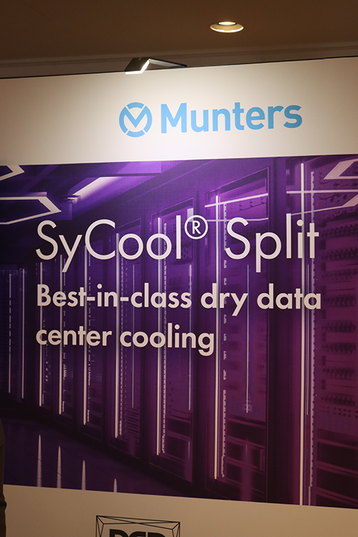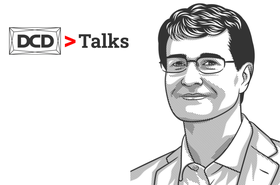It has been a rough few years.
While I do mean that in a general sense, I am also speaking a little more specifically for the data center folks.
Covid-19 took us on with a two-pronged attack – doing nothing to reduce demand, but scuppering the supply chain, and we are still dealing with the repercussions of the battle.
For the most part, the masses have regained their health, but has the supply chain? Well, according to Keith Dunnavant, VP of sales at Munters, not quite.
In our latest DCD>Talk, we hear how Munters has handled the supply chain issues as the company continues in its quest to dominate the heat rejection market, and it has by no means been easy.
“One of the narratives that has been around for a while, is that the uncertainty in the supply chain has continued to have our customers reach out and collaborate with us, as a partner, to make sure that we're able to deliver the cooling equipment they need on time,” explains Dunnavant. “That means there's no more waiting until the last minute, placing orders 12 to 14 weeks ahead of when you need that equipment. Instead, customers realize that lead times have extended to as much as 50-
70 weeks in some cases, so they are planning ahead and ordering early.””
While that may seem like a natural solution, when you have every single customer taking the same tactic, you end up exactly where you started: never having quite enough supply to satiate demand.
“We continue to get last-minute calls from our vendors about things that were supposed to be delivered in a week, and now it's been delayed six months. That means we've got to be nimble, and we've got to have support from engineering and R&D to find alternatives.
“It's been very challenging, but we've been able to overcome it. It has been quite a hurdle though. The big challenge, not just for Munters, but for the whole industry has been around fans with integrated motors. We’ve seen those lead times stretched out to 70, 80 weeks, and that crippled the industry. We saw that early on and I'm very proud to say that we've solved that problem. Our supply chain around fans and motors is intact.”
While the company is feeling more stable in its supply chain, another obstacle facing companies like Munters is that the demand, while not decreasing, is also complexifying. There are greater nuances and requirements for cooling systems, and companies have to meet these expectations lest they lose customers to their competitors.
“Another thing we're seeing is that data centers need to be liquid cooling capable. There's definitely a lack of clarity on what that means. But all of the folks that we're working with, regardless of the cooling systems that they're installing, they're definitely asking the question: how will your system work with liquid?”
As a company that wants to be the heat rejection specialist, providing solutions that can adapt regardless of whether a facility is liquid or air-cooled, is non-negotiable.
“Our strategy involves using standard validated designs, but we remain flexible to customize these to tailor to the customer's exact needs,” says Dunnavant. “It also means having a broad portfolio of products. We've got air-cooled equipment that can operate dry or with an evaporative assist, and we have a solution for cooling liquid very efficiently, whether the method of liquid cooling is direct to chip or immersion.
“For the dry air-cooled products: we offer packaged units with plate-type heat exchangers or heat pipes. Eventually, that may mean a packaged SyCool design, and that also means SyCool split systems or chilled water fan coil arrays.
“Then for our evaporative assist products, that means our direct evaporative cooling portfolio of products, which is everything from just media that we sell to everybody in the industry, to modular systems. That's media with a sump and a pump that can go in anybody's air handler, inside the building or complete package systems. Also on the wet side, we have our indirect evaporative cooling platform."
Part of Munters’ plan of attack is an all-new factory to enhance manufacturing capacity and also to advance our R&D. The company has opened and is in process of moving into the 365,000 sq ft factory in Virginia. The factory, powered by renewable energy, is anticipated to change the cooling system game.
“We have a state-of-the-art test lab with the capability to test systems with recirculating air volume up to 80,000 cubic feet per minute (cfm). On the condenser side, we can simulate up to 150,000 cfm of condenser air, tempered to the ambient design condition, which is larger than most labs are able to do.”


